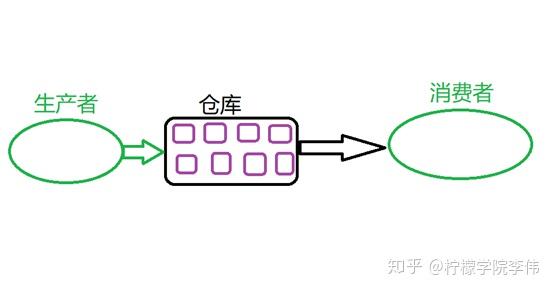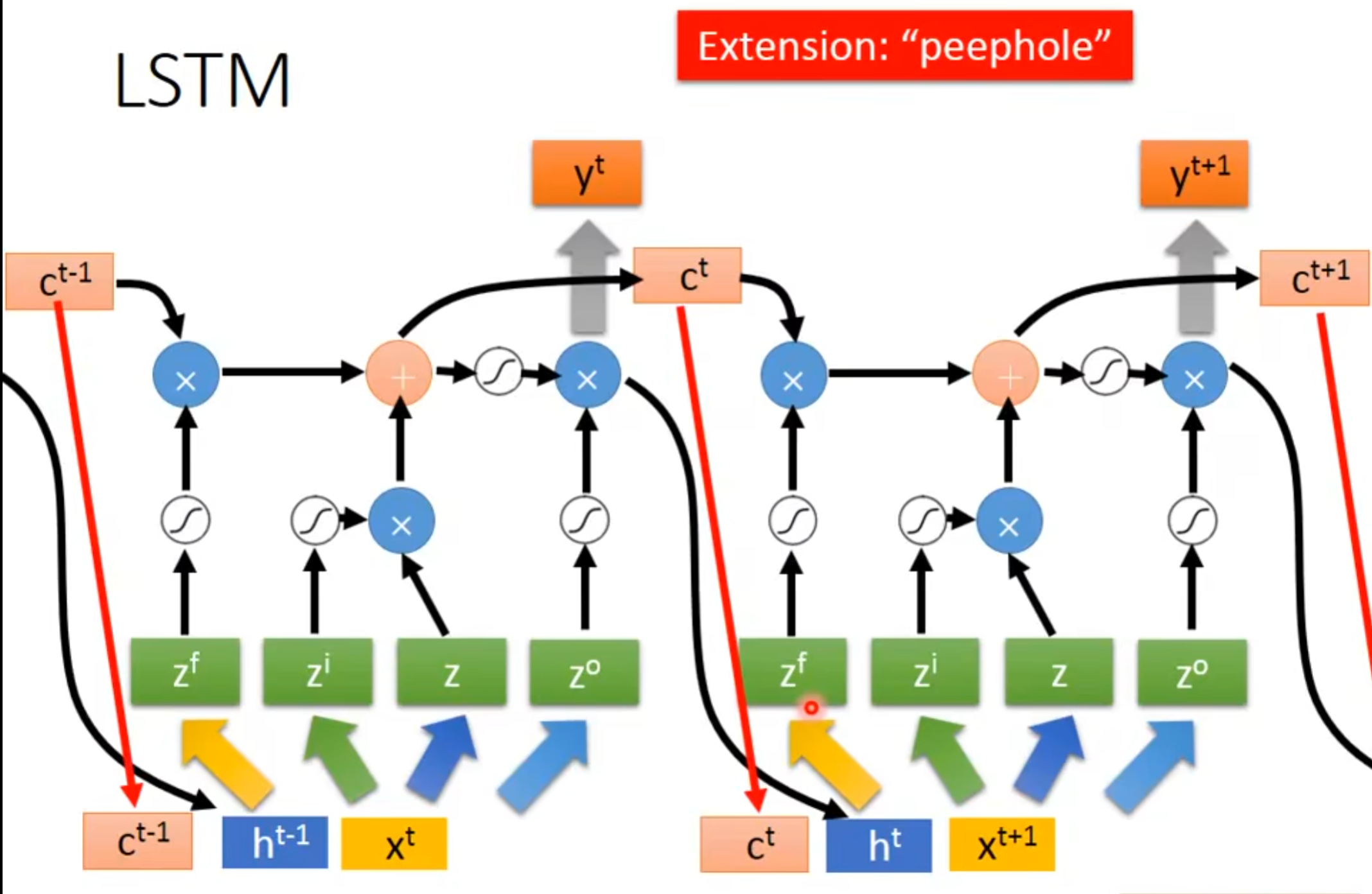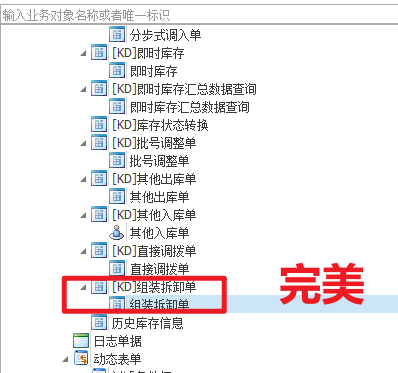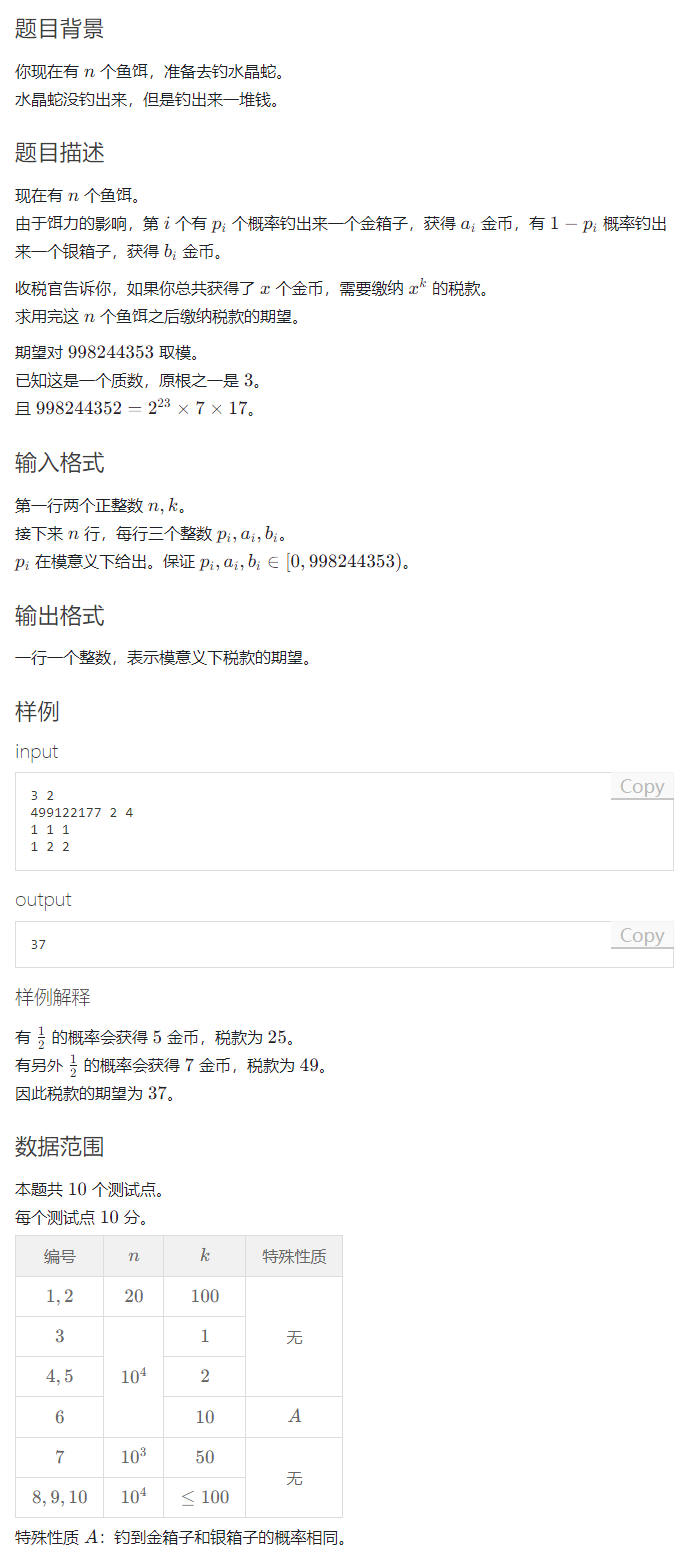一、线程介绍
- 线程是操作系统能内够进行运算、执行的最小单位,它被包含在进程之中,是进程中的实际运作单位。一条线程指的是进程中一个单一顺序的控制流,一个进程中可以并发多个线程,每条线程并行执行不同的任务。
总结:线程是进程的一部分,是进程内负责执行的单位,进程是由资源单位(内存资源、信号处理方案、文件表)+执行单位组成,默认情况下进程内只有一个线程,但可以有多个。
线程的发展简史:
60年代,在操作系统中能拥有资源和独立运行的基本单位是进程。
随着计算机技术的发展,进程出现了很多弊端:
一是由于进程是资源拥有者,创建、撤消与切换存在较大的时间开销,因此需要引入轻型进程;
二是由于对称多处理机出现,可以满足多个运行单位,而多个进程并行开销过大。
因此在80年代,出现了能独立运行的基本单位——线程(Threads)。
线程的调度策略:
线程是独立调度和分派的基本单位,有三种不同的调试策略:
- 线程可以为操作系统内核调度的内核线程,如Win32线程;
- 由用户进行自行调度的用户线程,如Linux、UNIX平台的POSIX Thread;
- 由内核与用户进程进行混合调度,如Windows 7的线程。
多线程适用的范围:
一个进程可以有很多线程,每条线程并行执行不同的任务。
在多核或多CPU,或支持Hyper-threading的CPU上使用多线程程序设计的好处是显而易见,即提高了程序的执行吞吐率。
在单CPU单核的计算机上,使用多线程技术,可以把进程中负责I/O处理、人机交互而常被阻塞的部分与密集计算的部分分开来执行,原因就是线程占用的资源少,被阻塞时不浪费资源。
线程的特点:
轻型实体:
线程中的实体基本上不拥有系统资源,只是有一点必不可少的、能保证独立运行的资源。线程的实体包括用于指示被执行指令序列的程序计数器、局部变量、状态参数和返回地址。
线程是动态概念,它的动态特性由线程控制块TCB(Thread Control Block)描述,包括以下信息:
1、线程状态
2、当线程不运行时,被保存的现场资源。
3、一组执行堆栈
4、存放每个线程的局部变量主存区
5、访问同一个进程中的主存和其它资源
独立调度和分派的基本单位:
在多线程OS中,线程是能独立运行的基本单位,因而也是独立调度和分派的基本单位。由于线程很“轻”,故线程的切换非常迅速且开销小(在同一进程中的)。
可并发执行:
在一个进程中的多个线程之间,可以并发执行,甚至允许在一个进程中所有线程都能并发执行;同样,不同进程中的线程也能并发执行,充分利用和发挥了CPU与外围设备并行工作的能力。
共享进程资源:
在同一进程中的各个线程,都可以访问该进程的用户空间,此外,还可以访问进程所拥有的已打开文件、定时器、信号量等,线程可以共享该进程所拥有的资源。所以线程之间互相通信不必调用内核。
二、线程与进程的区别(多进程与多线程)
资源:
进程采用虚拟空间+用户态/内核态机制,所以就导致进程与进程之间是互相独立的,各自的资源不可见。
在同一进程中的各个线程都可以共享该进程所拥有的资源。
多进程之间资源是独立的,多线程之间资源是共享的。
通信:
由于进程之间是互相独立的,需要使用各种IPC通信机制,保障多个进程协同工作。
同一进程中的各个线程共享该进程所拥有的资源,线程间可以直接读写进程数据段来进行通信,但需要线程同步和互斥手段的辅助,以保证数据的一致性。
多进程之间资源是独立的,所以需要通信,多线程之间资源是共享的,所以需要同步和互斥。
调度:
无论系统采用什么样的线程调试策略,线程上下文切换都比进程上下文切换要快得多。
身份:
进程是个资源单位,线程是个执行单位,并且线程是进程的一部分,线程需要进程安身立命,进程也需要线程当牛做马。
三、POSIX线程库
POSIX线程库介绍:
POSIX线程(POSIX Threads,常被缩写为pthread)是POSIX的线程标准,定义了创建和操纵线程的一套API。
实现POSIX 线程标准的库常被称作pthread,一般用于Unix-likePOSIX 系统,如Linux、Solaris。但是Microsoft Windows上的实现也存在,例如直接使用Windows API实现的第三方库pthread-w32。
API具体内容:
pthread定义了一套C语言的类型、函数与常量,它以pthread.h头文件和一个接口库libpthread.so,gcc和g++编译器没有默认链接该库,需要程序员使用 -l pthread 参数进行手动链接。
pthread API中大致共有100个函数调用,全都以"pthread_"开头,并可以分为四类:
1、线程管理,如创建线程,等待线程,查询线程状态等。
2、互斥锁,有创建、摧毁、锁定、解锁、设置属性等操作
3、条件变量,有创建、摧毁、等待、通知、设置与查询属性等操作
4、使用了互斥锁的线程间的同步管理。
四、创建线程
int pthread_create (pthread_t* thread,const pthread_attr_t* attr,void* (*start_routine) (void*),void* arg);thread - 线程ID,输出型参数。我们目前使用的Linux中pthread_t即unsigned long int
attr - 线程属性,NULL表示缺省属性,如果没有特殊需求,一般写NULL即可
start_routine - 线程入口函数指针,参数和返回值的类型都是void*启动线程本质上就是调用一个函数,只不过是在一个独立的线程中调用的,函数返回即线程结束
arg - 传递给线程过程函数的参数
返回值:成功返回0,失败返回错误码,但不会修改全局的错误变量,也就是无法使用perror获取错误原因。 注意:1、restrict: C99引入的编译优化指示符,提高重复解引用同一个指针的效率。2、应设法保证在线程过程函数执行期间,其参数所指向的目标持久有效。
#include <stdio.h>
#include <unistd.h>
#include <pthread.h>void* run(void* arg)
{for(;;){printf("#");fflush(stdout);sleep(1);}
}int main(int argc,const char* argv[])
{pthread_t tid;int ret = pthread_create(&tid,NULL,run,NULL);printf("%d %lu\n",ret,tid);for(;;){printf("*");fflush(stdout);sleep(1);}return 0;
}
五、线程回收
int pthread_join (pthread_t thread, void** retval);
功能:等待thread参数所标识的线程结束,并回收相关资源,如果thread线程没有结束则阻塞
retval:获得线程正常结束时的返回值,是输出型的参数,用于获取线程入口函数的返回值。
返回值:成功返回0,失败返回错误码从线程过程函数中返回值的方法:1、线程过程函数将所需返回的内容放在一块内存中,返回该内存块的首地址,保证这块内存在函数返回,即线程结束,以后依然有效;2、若retval参数非NULL,则pthread_join函数将线程入口函数所返回的指针,拷贝到该参数所指向的内存中;3、线程入口函数所返回的指针指向text、data、bss内存段的数据,如果指向heap内存段,则还需保证在用过该内存之后释放之。
六、获取线程ID、判断线程ID
pthread_t pthread_self (void);
成功返回调用线程的ID,不会失败。int pthread_equal (pthread_t t1, pthread_t t2);
功能:若参数t1和t2所标识的线程ID相等,则返回非零,否则返回0。注意:某些实现的pthread_t不是unsigned long int类型,可能是结构体类型,无法通过“==”判断其相等性。
练习:在一个多线程的进程中,设计一个函数,该函数只能由主线程调用,其它线程如果调用了该函数要立即结束执行。
七、终止线程
方法1:从线程入口函数中return,主线程除外。
方法2:调用pthread_exit函数。
void pthread_exit (void* retval);
retval - 和线程过程函数的返回值语义相同。
注意:在任何线程中调用exit函数都将终止整个进程。
问题:主线程结束,子线程是否会跟着一起结束?
主线程结束,并不会导致子线程跟着一起结束,它们之间没有必然联系。
但是,主线程如果执行到最后一行,会执行return 0或隐藏的return 0,而在main函数中执行return 0就相当于执行exit(0),然后当前进程就会结束,有两种方法可以避免这种情况:
方法1:
等待所有子线程结束,主线程再执行return 0;
子线程在一定时间内会结束,侧使用pthread_join。
方法2:
立即结束主线程,不要让它执行return 0;
当子线程的结束时间不确定,则使用pthread_exit。
注意:这种情况会产生新的问题,子线程的资源没有办法回收。
#include <stdio.h>
#include <pthread.h>
#include <unistd.h>void* run(void* arg)
{for(int i=0; ;i++){printf("子线程:%lu %d\n",pthread_self(),i);sleep(1);}
}int main(void)
{pthread_t tid;pthread_create(&tid,NULL,run,NULL);for(int i=0; i<3; i++){printf("我是主线程,我要结束了,倒计时:%d\n",3-i);sleep(1);}exit
}
八、线程分离
同步方式(非分离状态):创建线程之后主线程调用pthread_join函数等待其终止,并释放线程资源。
异步方式(分离状态):无需创建者等待,线程终止后自行释放资源。
int pthread_detach (pthread_t thread);
功能:使thread参数所标识的线程进入分离(DETACHED)状态。
返回值:成功返回0,失败返回错误码。
注意:如果若干个子线程需要长时间执行,不知道什么时候能结束,为了避免它父线程陷入无尽的等待,可提前给子线程设置分离状态。
九、取消线程
向发送取消请求:
int pthread_cancel (pthread_t thread);
功能:该函数只是向线程发出取消请求,并不等待线程终止。缺省情况下,线程在收到取消请求以后,并不会立即终止,而是仍继续运行,直到其达到某个取消点。
在取消点处,线程检查其自身是否已被取消了,并做出相应动作。
设置可取消状态:
int pthread_setcancelstate (int state,int* oldstate);
成功返回0,并通过oldstate参数输出原可取消状态(若非NULL),失败返回错误码。state取值:PTHREAD_CANCEL_ENABLE - 接受取消请求(缺省)。PTHREAD_CANCEL_DISABLE - 忽略取消请求。
设置可取消类型:
int pthread_setcanceltype (int type, int* oldtype);成功返回0,并通过oldtype参数输出原可取消类型
(若非NULL),失败返回错误码。type取值:PTHREAD_CANCEL_DEFERRED - 延迟取消(缺省)。被取消线程在接收到取消请求之后并不立即响应,而是一直等到执行了特定的函数(取消点)之后再响应该请求。PTHREAD_CANCEL_ASYNCHRONOUS - 异步取消。被取消线程可以在任意时间取消,不是非得遇到取消点才能被取消。但是操作系统并不能保证这一点。
十、线程属性
int pthread_create (pthread_t* restrict thread,const pthread_attr_t* restrict attr,void* (*start_routine) (void*),void* restrict arg);//创建线程函数的第二个参数即为线程属性,传空指针表示使用缺省属性。
typedef struct {// 分离状态int detachstate;// PTHREAD_CREATE_DETACHED - 分离线程。// PTHREAD_CREATE_JOINABLE(缺省) - 可汇合线程。// 竞争范围int scope;// PTHREAD_SCOPE_SYSTEM - 在系统范围内竞争资源(时间片)。// PTHREAD_SCOPE_PROCESS(Linux不支持) - 在进程范围内竞争资源。// 继承特性int inheritsched;// PTHREAD_INHERIT_SCHED(缺省) - 调度属性自创建者线程继承。// PTHREAD_EXPLICIT_SCHED - 调度属性由后面两个成员确定。// 调度策略nt schedpolicy;// SCHED_FIFO - 先进先出策略。// 没有时间片。// 一个FIFO线程会持续运行,直到阻塞或有高优先级线程就绪。// 当FIFO线程阻塞时,系统将其移出就绪队列,待其恢复时再加到同优先级就绪队列的末尾。// 当FIFO线程被高优先级线程抢占时,它在就绪队列中的位置不变。// 因此一旦高优先级线程终止或阻塞,被抢占的FIFO线程将会立即继续运行。// SCHED_RR - 轮转策略。// 给每个RR线程分配一个时间片,一但RR线程的时间片耗尽,系统即将移到就绪队列的末尾。// SCHED_OTHER(缺省) - 普通策略。// 静态优先级为0。任何就绪的FIFO线程或RR线程,都会抢占此类线程。 // 调度参数struct sched_param schedparam;// struct sched_param {// int sched_priority; /* 静态优先级 */// };// 栈尾警戒区大小(字节) 缺省一页(4096字节)。size_t guardsize;// 栈地址void* stackaddr;// 栈大小(字节)size_t stacksize;
} pthread_attr_t;注意:不要手动读写该结构体,而应调用pthread_attr_set/get函数设置/获取具体属性项。
设置线程属性:
初始化线程属性结构体:
pthread_attr_t attr = {}; // 不要使用这种方式
int pthread_attr_init (pthread_attr_t* attr);
设置具体线程属性项:
int pthread_attr_setdetachstate (pthread_attr_t* attr,int detachstate);
int pthread_attr_setscope (pthread_attr_t* attr,int scope);
int pthread_attr_setinheritsched (pthread_attr_t* attr,int inheritsched);
int pthread_attr_setschedpolicy (pthread_attr_t* attr,int policy);
int pthread_attr_setschedparam (pthread_attr_t* attr,const struct sched_param* param);
int pthread_attr_setguardsize (pthread_attr_t* attr,size_t guardsize);
int pthread_attr_setstackaddr (pthread_attr_t* attr,void* stackaddr);
int pthread_attr_setstacksize (pthread_attr_t* attr,size_t stacksize);
int pthread_attr_setstack (pthread_attr_t* attr,void* stackaddr, size_t stacksize);
以设置好的线程属性结构体为参数创建线程:
int pthread_create (pthread_t* restrict thread,const pthread_attr_t* testrict attr,void* (*start_routine) (void*),void* restrict arg);
销毁线程属性结构体:
int pthread_attr_destroy (pthread_attr_t* attr);
获取线程属性:
获取线程属性结构体:
int pthread_getattr_np (pthread_t thread,pthread_attr_t* attr);
获取具体线程属性项:
int pthread_attr_getdetachstate (pthread_attr_t* attr,int* detachstate);
int pthread_attr_getscope (pthread_attr_t* attr,int* scope);
int pthread_attr_getinheritsched (pthread_attr_t* attr,int* inheritsched);
int pthread_attr_getschedpolicy (pthread_attr_t* attr,int* policy);
int pthread_attr_getschedparam (pthread_attr_t* attr,struct sched_param* param);
int pthread_attr_getguardsize (pthread_attr_t* attr,size_t* guardsize);
int pthread_attr_getstackaddr (pthread_attr_t* attr,void** stackaddr);
int pthread_attr_getstacksize (pthread_attr_t* attr,size_t* stacksize);
int pthread_attr_getstack (pthread_attr_t* attr,void** stackaddr, size_t* stacksize);
以上所有函数成功返回0,失败返回错误码。
#include <stdio.h>
#include <stdlib.h>
#include <string.h>
#include <unistd.h>
#define __USE_GNU
#include <pthread.h>int printattrs (pthread_attr_t* attr)
{printf("------- 线程属性 -------\n");int detachstate;int error = pthread_attr_getdetachstate (attr, &detachstate);if (error) {fprintf (stderr, "pthread_attr_getdetachstate: %s\n",strerror (error));return -1;}printf("分离状态: %s\n",(detachstate == PTHREAD_CREATE_DETACHED) ? "分离线程" :(detachstate == PTHREAD_CREATE_JOINABLE) ? "可汇合线程" :"未知");int scope;if ((error = pthread_attr_getscope (attr, &scope)) != 0) {fprintf (stderr, "pthread_attr_getscope: %s\n",strerror (error));return -1;}printf ("竞争范围: %s\n",(scope == PTHREAD_SCOPE_SYSTEM) ? "系统级竞争" :(scope == PTHREAD_SCOPE_PROCESS) ? "进程级竞争" : "未知");int inheritsched;if ((error = pthread_attr_getinheritsched (attr,&inheritsched)) != 0) {fprintf (stderr, "pthread_attr_getinheritsched: %s\n",strerror (error));return -1;}printf ("继承特性: %s\n",(inheritsched == PTHREAD_INHERIT_SCHED) ? "继承调用属性" :(inheritsched == PTHREAD_EXPLICIT_SCHED) ? "显式调用属性" :"未知");int schedpolicy;if ((error = pthread_attr_getschedpolicy(attr,&schedpolicy)) != 0) {fprintf (stderr, "pthread_attr_getschedpolicy: %s\n",strerror (error));return -1;}printf ("调度策略: %s\n",(schedpolicy == SCHED_OTHER) ? "普通" :(schedpolicy == SCHED_FIFO) ? "先进先出" :(schedpolicy == SCHED_RR) ? "轮转" : "未知");struct sched_param schedparam;if ((error = pthread_attr_getschedparam (attr, &schedparam)) != 0) {fprintf (stderr, "pthread_attr_getschedparam: %s\n",strerror (error));return -1;}printf ("调度优先级:%d\n", schedparam.sched_priority);size_t guardsize;if ((error = pthread_attr_getguardsize(attr, &guardsize)) != 0) {fprintf (stderr, "pthread_attr_getguardsize: %s\n",strerror (error));return -1;}printf ("栈尾警戒区:%u字节\n", guardsize);/*void* stackaddr;if ((error = pthread_attr_getstackaddr (attr, &stackaddr)) != 0) {fprintf (stderr, "pthread_attr_getstackaddr: %s\n",strerror (error));return -1;}printf ("栈地址: %p\n", stackaddr);size_t stacksize;if ((error = pthread_attr_getstacksize (attr, &stacksize)) != 0) {fprintf (stderr, "pthread_attr_getstacksize: %s\n",strerror (error));return -1;}printf ("栈大小: %u字节\n", stacksize);*/void* stackaddr;size_t stacksize;if ((error = pthread_attr_getstack (attr, &stackaddr,&stacksize)) != 0) {fprintf (stderr, "pthread_attr_getstack: %s\n",strerror (error));return -1;}printf ("栈地址: %p\n", stackaddr);printf ("栈大小: %u字节\n", stacksize);printf("------------------------\n");return 0;
}void* thread_proc (void* arg)
{pthread_attr_t attr;int error = pthread_getattr_np (pthread_self (), &attr);if (error) {fprintf (stderr, "pthread_getattr_np: %s\n", strerror (error));exit (EXIT_FAILURE);}if (printattrs (&attr) < 0)exit (EXIT_FAILURE);exit (EXIT_SUCCESS);return NULL;
}int main (int argc, char* argv[])
{int error;pthread_attr_t attr, *pattr = NULL;if (argc > 1) {if (strcmp (argv[1], "-s")) {fprintf (stderr, "用法:%s [-s]\n", argv[0]);return -1;}if ((error = pthread_attr_init (&attr)) != 0) {fprintf (stderr, "pthread_attr_init: %s\n",strerror (error));return -1;}if ((error = pthread_attr_setdetachstate (&attr,PTHREAD_CREATE_DETACHED)) != 0) {fprintf (stderr, "pthread_attr_setdetachstate: %s\n",strerror (error));return -1;}if ((error = pthread_attr_setinheritsched (&attr,PTHREAD_EXPLICIT_SCHED)) != 0) {fprintf (stderr, "pthread_attr_setinheritsched: %s\n",strerror (error));return -1;}if ((error = pthread_attr_setstacksize (&attr, 4096*10)) != 0) {fprintf (stderr, "pthread_attr_setstack: %s\n",strerror (error));return -1;}pattr = &attr;}pthread_t tid;if ((error = pthread_create (&tid, pattr, thread_proc,NULL)) != 0) {fprintf (stderr, "pthread_create: %s\n", strerror (error));return -1;}if (pattr){if ((error = pthread_attr_destroy (pattr)) != 0) {fprintf (stderr, "pthread_attr_destroy: %s\n",strerror (error));return -1;}}pause ();return 0;
}
注意:如果man手册查不到线程的相关函数,安装完整版gnu手册:sudo apt-get install glibc-doc。
练习:实现大文件的多线程cp拷贝,对比系统cp命令,哪个速度更快,为什么?
#include <stdio.h>
#include <stdlib.h>
#include <unistd.h>
#include <pthread.h>
#include <sys/stat.h>
#include <sys/types.h>typedef struct Task
{char* src;char* dest;size_t start;size_t end;
}Task;void* run(void* arg)
{Task* task = arg;// 打开源文件和目标文件FILE* src_fp = fopen(task->src,"r");FILE* dest_fp = fopen(task->dest,"a");if(NULL == src_fp || NULL == dest_fp){perror("fopen");return NULL;}// 调整文件的位置指针fseek(src_fp,task->start,SEEK_SET);fseek(dest_fp,task->start,SEEK_SET);// 创建缓冲区char buf[1024];size_t buf_size = sizeof(buf);for(int i=task->start; i<task->end; i+=buf_size){int ret = fread(buf,1,buf_size,src_fp);if(0 >= ret)break;fwrite(buf,1,ret,dest_fp);}fclose(src_fp);fclose(dest_fp);free(task);
}int main(int argc,const char* argv[])
{if(3 != argc){puts("Use:./cp <src> <dest>");return 0;}// 获取到文件的大小struct stat buf;if(stat(argv[1],&buf)){perror("stat");return -1;}// 创建出目标文件if(NULL == fopen(argv[2],"w")){perror("fopen");return -2;}// 计算需要的线程数量,以100M为单位size_t pthread_cnt = buf.st_size/(1024*1024*100)+1;// 分配任务pthread_t tid;for(int i=0; i<pthread_cnt; i++){Task* task = malloc(sizeof(Task));task->src = (char*)argv[1];task->dest = (char*)argv[2];task->start = i*1024*1024*100;task->end = (i+1)*1024*1024*100;// 创建子线程并分配任务pthread_create(&tid,NULL,run,task);// 分享子线程pthread_detach(tid);}// 结束主线程pthread_exit(NULL);
}
多线程并不能提高运行速度,反而可能会降低,所以多线程不适合解决运算密集性问题,而是适合解决等待、阻塞的问题,如果使用进程去等待,会浪费大量资源,所以使用更轻量的线程去等待,节约资源。
一、线程同步
同步就是协同步调,按预定的先后次序进行运行。如:你说完,我再说。“同”字从字面上容易理解为一起动作,其实不是,“同”字应是指协同、协助、互相配合。
如进程、线程同步,可理解为进程或线程A和B一块配合,A执行到一定程度时要依靠B的某个结果,于是停下来,示意B运行;B依言执行,再将结果给A,A再继续操作。
在多线程编程里面,一些敏感数据不允许被多个线程同时访问,此时就使用同步访问技术,保证数据在任何时刻,最多有一个线程访问,以保证数据的完整性。
注意:同一个进程内存的多个线程之间,除了栈内存是独立的,其他资源全部共享。
#include <stdio.h>
#include <pthread.h>int num = 0;
void* run(void* arg)
{for(int i=0; i<1000000; i++){// 加锁num++;// 解锁}
}int main(int argc,const char* argv[])
{pthread_t tid1,tid2;pthread_create(&tid1,NULL,run,NULL);pthread_create(&tid2,NULL,run,NULL);pthread_join(tid1,NULL);pthread_join(tid2,NULL);printf("%d\n",num);
}
线程A 线程A
读取
运算 读取
回写 运算
回写
二、互斥锁
注意:如果man手册中查不到这系列函数,可以安装以下内容:sudo apt-get install glibc-docsudo apt-get install manpages-posix-devpthread_mutex_t mutex = PTHREAD_MUTEX_INITIALIZER;
功能:定义并初始化互斥锁int pthread_mutex_init (pthread_mutex_t* mutex,const pthread_mutexattr_t* mutexattr);
功能:初始化一互斥锁,会被初始化为非锁定状态int pthread_mutex_lock (pthread_mutex_t* mutex);
功能:加锁,当互斥锁已经是锁定状态时,调用者会阻塞,直到互斥被解开,当前线程才会加锁成功并返回。int pthread_mutex_unlock (pthread_mutex_t* mutex);
功能:解锁,解锁后等待加锁的线程才能加锁成功。int pthread_mutex_destroy (pthread_mutex_t* mutex);
功能:销毁锁int pthread_mutex_trylock (pthread_mutex_t *__mutex)
功能:加测试锁,如果不加锁刚立即返回int pthread_mutex_timedlock(pthread_mutex_t *restrict mutex,const struct timespec *restrict abs_timeout);
功能:倒计时加锁,如果超时还不加上则立即返回。
struct timespec{time_t tv_sec; /* Seconds. */long int tv_nsec; /* Nanoseconds.*/ 1秒= 1000000000 纳秒
};
#include <stdio.h>
#include <pthread.h>
/*
执行流程:1、互斥锁被初始化为非锁定状态2、线程1调用pthread_mutex_lock函数,立即返回,互斥量呈锁定状态;3、线程2调用pthread_mutex_lock函数,阻塞等待;4、线程1调用pthread_mutex_unlock函数,互斥量呈非锁定状态;5、线程2被唤醒,从pthread_mutex_lock函数中返回,互斥量呈锁定状态
*/pthread_mutex_t mutex;
//pthread_mutex_t mutex = PTHREAD_MUTEX_INITIALIZER;int num = 0;
void* run(void* arg)
{for(int i=0; i<1000000; i++){pthread_mutex_lock(&mutex);num++;pthread_mutex_unlock(&mutex);}
}int main(int argc,const char* argv[])
{pthread_mutex_init(&mutex,NULL);pthread_t pid1,pid2;pthread_create(&pid1,NULL,run,NULL);pthread_create(&pid2,NULL,run,NULL);pthread_join(pid1,NULL);pthread_join(pid2,NULL);pthread_mutex_destroy(&mutex);printf("%d\n",num);
}
三、读写锁
pthread_rwlock_t rwlock = PTHREAD_RWLOCK_INITIALIZER;
功能:定义并初始化读写锁int pthread_rwlock_init(pthread_rwlock_t *restrict rwlock,const pthread_rwlockattr_t *restrict attr);
功能:初始化读写锁int pthread_rwlock_rdlock(pthread_rwlock_t *rwlock);
功能:加读锁,如果不能加则阻塞等待int pthread_rwlock_wrlock(pthread_rwlock_t *rwlock);
功能:加写锁,如果不能加则阻塞等待int pthread_rwlock_unlock(pthread_rwlock_t *rwlock);
功能:解读写锁。int pthread_rwlock_tryrdlock(pthread_rwlock_t *rwlock);
功能:尝试加读锁,如果不能加则立即返回int pthread_rwlock_trywrlock(pthread_rwlock_t *rwlock);
功能:尝试加写锁,如果不能加则立即返回int pthread_rwlock_timedrdlock(pthread_rwlock_t *restrict rwlock,const struct timespec *restrict abstime);
功能:带倒计时加读锁,超时则立即返回int pthread_rwlock_timedwrlock(pthread_rwlock_t *restrict rwlock,const struct timespec *restrict abstime);
功能:带倒计时加写锁,超时则立即返回int pthread_rwlock_destroy(pthread_rwlock_t *rwlock);
功能:销毁读写锁使用读写锁的线程应根据后续的操作进行加锁,如果只对数据进行读取则只加读锁即可,只有对数据进行修改时才应该加写锁,与互斥锁的区别是,它能让只读的线程加上锁,使用原理与文件锁一样。线程A 线程B读锁 读锁 OK读锁 写锁 NO写锁 读锁 NO写锁 写锁 NO练习:使用读写锁来解决同步问题。
#include <stdio.h>
#include <pthread.h>pthread_rwlock_t rwlock = PTHREAD_RWLOCK_INITIALIZER;int num = 0;
void* run(void* arg)
{for(int i=0; i<1000000; i++){pthread_rwlock_wrlock(&rwlock);num++;pthread_rwlock_unlock(&rwlock);}
}int main(int argc,const char* argv[])
{pthread_t tid1,tid2;pthread_create(&tid1,NULL,run,NULL);pthread_create(&tid2,NULL,run,NULL);pthread_join(tid1,NULL);pthread_join(tid2,NULL);pthread_rwlock_destroy(&rwlock);printf("%d\n",num);
}
四、死锁问题
什么是死锁:
多个线程互相等待对方资源,在得到所需要的资源之前都不会释放自己的资源,然后造成循环等待的现象,称为死锁。
死锁产生四大必要条件:
1、资源互斥
2、占有且等待
3、资源不可剥夺
4、环路等待
以上四个条件缺一不可,只要有一个不满足就不能构成死锁。
#include <stdio.h>
#include <unistd.h>
#include <pthread.h>// 创建三个互斥锁并初始化
pthread_mutex_t mutex1 = PTHREAD_MUTEX_INITIALIZER;
pthread_mutex_t mutex2 = PTHREAD_MUTEX_INITIALIZER;
pthread_mutex_t mutex3 = PTHREAD_MUTEX_INITIALIZER;void* run1(void* arg)
{pthread_mutex_lock(&mutex1);usleep(100);pthread_mutex_lock(&mutex2);printf("没有构成死锁!!!\n");pthread_mutex_unlock(&mutex2);pthread_mutex_unlock(&mutex1);
}
void* run2(void* arg)
{pthread_mutex_lock(&mutex2);usleep(100);pthread_mutex_lock(&mutex3);printf("没有构成死锁!!!\n");pthread_mutex_unlock(&mutex3);pthread_mutex_unlock(&mutex2);
}
void* run3(void* arg)
{pthread_mutex_lock(&mutex3);usleep(100);pthread_mutex_lock(&mutex1);printf("没有构成死锁!!!\n");pthread_mutex_unlock(&mutex1);pthread_mutex_unlock(&mutex3);
}int main(int argc,const char* argv[])
{// 创建三个线程pthread_t tid1,tid2,tid3;pthread_create(&tid1,NULL,run1,NULL);pthread_create(&tid2,NULL,run2,NULL);pthread_create(&tid3,NULL,run3,NULL);// 主线程等待三个子线程结束pthread_join(tid1,NULL);pthread_join(tid2,NULL);pthread_join(tid3,NULL);return 0;
}
如休防止出现死锁:
构成死锁的四个条件只有一个不成立,就不会产生死锁了。
1、破坏互斥条件,让资源能够共享使用(准备多份)。
2、破坏占有且等待的条件,一次申请完成它所有需要的资源(把所有资源进行打包,用一把锁来代表,拿到这反锁就相当于拿到的所有资源),资源没有满足前不让它运行,一旦开始运行就一直归它所有, 缺点是系统资源会被浪费。
3、破坏不可剥夺的条件,当已经占有了一些资源,请求新的资源而获取不到,然后就释放已经获取到的资源,缺点是实现起来比较复杂,释放已经获取到的资源可能会造成前一阶段的工作浪费。
4、破坏循环等待的条件,采用顺序分配资源的方法,在系统中为资源进行编号,规定线程必须按照编号递增的顺序获取资源,缺点是资源必须相对稳定,这样就限制了资源的增加和减少。
#include <stdio.h>
#include <unistd.h>
#include <pthread.h>// 创建三个互斥锁并初始化
pthread_mutex_t mutex1 = PTHREAD_MUTEX_INITIALIZER;
pthread_mutex_t mutex2 = PTHREAD_MUTEX_INITIALIZER;
pthread_mutex_t mutex3 = PTHREAD_MUTEX_INITIALIZER;void* run1(void* arg)
{while(1){pthread_mutex_lock(&mutex1);usleep(100);if(0 == pthread_mutex_trylock(&mutex2))break;pthread_mutex_unlock(&mutex1);}printf("没有构成死锁!!!\n");pthread_mutex_unlock(&mutex2);pthread_mutex_unlock(&mutex1);
}
void* run2(void* arg)
{while(1){pthread_mutex_lock(&mutex2);usleep(100);if(0 == pthread_mutex_trylock(&mutex3))break;pthread_mutex_unlock(&mutex2);}printf("没有构成死锁!!!\n");pthread_mutex_unlock(&mutex3);pthread_mutex_unlock(&mutex2);
}
void* run3(void* arg)
{while(1){pthread_mutex_lock(&mutex3);usleep(100);if(0 == pthread_mutex_trylock(&mutex1))break;pthread_mutex_unlock(&mutex3);}printf("没有构成死锁!!!\n");pthread_mutex_unlock(&mutex1);pthread_mutex_unlock(&mutex3);
}int main(int argc,const char* argv[])
{// 创建三个线程pthread_t tid1,tid2,tid3;pthread_create(&tid1,NULL,run1,NULL);pthread_create(&tid2,NULL,run2,NULL);pthread_create(&tid3,NULL,run3,NULL);// 主线程等待三个子线程结束pthread_join(tid1,NULL);pthread_join(tid2,NULL);pthread_join(tid3,NULL);return 0;
}
检测死锁的方法:
总体思路:观察+分析
方法1:阅读代码,分析各线程的加锁步骤。
方法2:使用strace追踪程序的执行流程。
方法3:查看日志观察程序的业务执行过程。
方法4:使用gdb调试,查看各线程的执行情况。
1、把断点打在线程创建完毕后
2、run
3、info threads 查看所有线程
4、thread n 进程指定的线程
5、bt 查看线程堆栈信息
6、配合s/n单步调试
什么是死锁?
构成死锁的4个必要条件?
如何避免死锁?
如何判断程序是否陷入死锁?
五、原子操作
所谓的原子操作就是不可被拆分的操作,对于多线程对全局变量进行操作时,就再也不用再线程锁了,和pthread_mutex_t保护作用是一样的,也是线程安全的,有些编译器在使用时需要加-march=i686编译参数。
type __sync_fetch_and_add (type *ptr, type value); // +
type __sync_fetch_and_sub (type *ptr, type value); // -
type __sync_fetch_and_and (type *ptr, type value); // &
type __sync_fetch_and_or (type *ptr, type value); // |
type __sync_fetch_and_nand (type *ptr, type value); // ~
type __sync_fetch_and_xor (type *ptr, type value); // ^
功能:以上操作返回的是*ptr的旧值type __sync_add_and_fetch (type *ptr, type value); // +
type __sync_sub_and_fetch (type *ptr, type value); // -
type __sync_and_and_fetch (type *ptr, type value); // &
type __sync_or_and_fetch (type *ptr, type value); // |
type __sync_nand_and_fetch (type *ptr, type value); // ~
type __sync_xor_and_fetch (type *ptr, type value); // ^
功能:以上操作返回的是*ptr与value计算后的值type __sync_lock_test_and_set (type *ptr, type value);
功能:把value赋值给*ptr,并返回*ptr的旧值__sync_lock_release(type *ptr);
功能:将*ptr赋值为0
#include <stdio.h>
#include <pthread.h>int num = 0;
void* run(void* arg)
{for(int i=0; i<100000000; i++){__sync_fetch_and_add(&num,1);}
}int main(int argc,const char* argv[])
{pthread_t pid1,pid2;pthread_create(&pid1,NULL,run,NULL);pthread_create(&pid2,NULL,run,NULL);pthread_join(pid1,NULL);pthread_join(pid2,NULL);printf("%d\n",num);
}
原子操作的优点:
1、速度贼快
2、不会产生死锁
原子操作的缺点:
1、该功能并不通用,有些编译器不支持。
2、type只能是整数相关的类型,浮点型和自定义类型无法使用。
练习1:
使用读写锁或互斥锁实现一个线程安全队列。
#include "queue.h"
#include <stdlib.h>Node* create_node(TYPE data)
{Node* node = malloc(sizeof(Node));node->data = data;node->next = NULL;return node;
}Queue* create_queue(void)
{Queue* queue = malloc(sizeof(Queue));pthread_rwlock_init(&queue->lock,NULL);queue->front = NULL;queue->rear = NULL;return queue;
}bool empty_queue(Queue* queue)
{pthread_rwlock_rdlock(&queue->lock);bool flag = NULL == queue->front;pthread_rwlock_unlock(&queue->lock);return flag;
}void push_queue(Queue* queue,TYPE data)
{Node* node = create_node(data);if(empty_queue(queue)){pthread_rwlock_wrlock(&queue->lock);queue->front = node;queue->rear = node;}else{pthread_rwlock_wrlock(&queue->lock);queue->rear->next = node;queue->rear = node;}pthread_rwlock_unlock(&queue->lock);
}bool pop_queue(Queue* queue)
{if(empty_queue(queue))return false;pthread_rwlock_wrlock(&queue->lock);Node* tmp = queue->front;queue->front = tmp->next;pthread_rwlock_unlock(&queue->lock);free(tmp);return true;
}TYPE top_queue(Queue* queue)
{pthread_rwlock_rdlock(&queue->lock);TYPE data = queue->front->data;pthread_rwlock_unlock(&queue->lock);return data;
}void destroy_queue(Queue* queue)
{while(!empty_queue(queue))pop_queue(queue);pthread_rwlock_destroy(&queue->lock);free(queue);
}int main(void)
{Queue* queue = create_queue();for(int i=0; i<10; i++){push_queue(queue,i);printf("push %d\n",i);}while(!empty_queue(queue)){printf("top %d\n",top_queue(queue));pop_queue(queue);}
}
练习2:
使用原子操作实现一个线程安全的无锁队列。
//queue->rear = (queue->rear+1)%queue->cap;
if(queue->rear == queue->cap)
{queue->rear = 0;
}
else
{__sync_fetch_and_add(&queue->rear,1);
}queue->front = (queue->front+1)%queue->cap;
if(queue->front == queue->cap)
{queue->front = 0;
}
else
{__sync_fetch_and_add(&queue->front,1);
}
六、生产者与消费者模型

生产者:生产数据的线程,这类的线程负责从用户端、客户端接收数据,然后把数据Push到存储中介。
消费者:负责消耗数据的线程,对生产者线程生产的数据进行(判断、筛选、使用、响应、存储)处理。
存储中介:也叫数据仓库,是生产者线程与消费者线程之间的数据缓冲区,用于平衡二者之间的生产速度与消耗速度不均衡的问题,通过缓冲区隔离生产者和消费者,与二者直连相比,避免相互等待,提高运行效率。
问题1:生产快于消费,缓冲区满,撑死。
解决方法:负责生产的线程通知负责消费的线程全速消费,然后进入休眠。
问题2:消费快于生产,缓冲区空,饿死。
解决方法:负责消费的线程通知负责生产的线程全速生产,然后进入休眠。
七、条件变量
条件变量是利用线程间共享的"全局变量"进行同步的一种机制,主要包括两个动作:
1、线程等待"条件变量的条件成立"而休眠;
2、等"条件成立"叫醒休眠的线程。
为了防止竞争,条件变量的使用总是和一个互斥锁结合在一起,一般线程睡入条件变量,伴随着解锁动作,而线程从条件变量醒来时,伴随着加锁动作,如果加锁失败线程进入阻塞状态,而不是睡眠。
// 定义或创建条件变量
pthread_cond_t cond;// 初始化条件变量
int pthread_cond_init (pthread_cond_t* cond,const pthread_condattr_t* attr);
//亦可pthread_cond_t cond = PTHREAD_COND_INITIALIZER;// 使调用线程睡入条件变量cond,同时释放互斥锁mutex
int pthread_cond_wait (pthread_cond_t* cond,pthread_mutex_t* mutex);// 带倒计时的睡眠,时间到了会自动醒来
int pthread_cond_timedwait (pthread_cond_t* cond,pthread_mutex_t* mutex,const struct timespec* abstime);struct timespec {time_t tv_sec; // Secondslong tv_nsec; // Nanoseconds [0 - 999999999]
};// 从条件变量cond中叫醒一个线程,令其重新获得原先的互斥锁
int pthread_cond_signal (pthread_cond_t* cond);
注意:被唤出的线程此刻将从pthread_cond_wait函数中返回,
但如果该线程无法获得原先的锁,则会继续阻塞在加锁上。// 从条件变量cond中唤醒所有线程
int pthread_cond_broadcast (pthread_cond_t* cond);// 销毁条件变量
int pthread_cond_destroy (pthread_cond_t* cond);
注意:使用互斥锁配合条件变量实现的生产者与消费者模型,能够平衡生产与消费的时间不协调,并且可以最大限度的节约运行资源。
#include <stdio.h>
#include <unistd.h>
#include <pthread.h>pthread_cond_t cond = PTHREAD_COND_INITIALIZER;
pthread_mutex_t mutex = PTHREAD_MUTEX_INITIALIZER;void* run(void* arg)
{int index = 1;for(;;){pthread_mutex_lock(&mutex);if(0 == index % 10){printf("任务已完成,即将睡眠!\n");pthread_cond_wait(&cond,&mutex);}printf("index = %d\n",index++);sleep(1);pthread_mutex_unlock(&mutex);}
}int main(int argc,const char* argv[])
{pthread_t tid;pthread_create(&tid,NULL,run,NULL);printf("是否叫醒睡眠的线程?");for(;;){char cmd = getchar();if('y' == cmd){pthread_cond_signal(&cond);}}pthread_join(tid,NULL);return 0;
}
八、信号量
多线程使用的信号量:
#include <semaphore.h>
sem_t sem;int sem_init(sem_t *sem, int pshared, unsigned int value);
功能:给信号量设置初始值
pshared:信号量的使用范围0 线程间使用nonzero 进程之间使用int sem_wait(sem_t *sem);
功能:信号量减1操作,如果信号量已经等于0,则阻塞int sem_trywait(sem_t *sem);
功能:尝试对信号量减1操作,能减返回0成功,不能减返回-1失败,不会阻塞int sem_timedwait(sem_t *sem, const struct timespec *abs_timeout);
功能:带倒计时的对信号减1操作,能减返回0成功,不能减超时返回-1失败,阻塞abs_timeout一段时间int sem_post(sem_t *sem);
功能:对信号量执行加1操作int sem_getvalue(sem_t *sem, int *sval);
功能:获取信号量的值int sem_destroy(sem_t *sem);
功能:销毁信号量
多进程使用的信号量:
sem_t *sem_open(const char *name, int oflag,mode_t mode, unsigned int value);
功能:在内核创建一个信号量对象
name:信号量的名字
oflag:O_CREAT 不存在则创建信号量,存在则获取O_EXCL 如果信号量已经存在,返回失败
mode:信号量的权限
value:信号量的初始值sem_t *sem_open(const char *name, int oflag);
功能:获取信号,或相关属性int sem_unlink(const char *name);
功能:删除信号量
![[学习笔记]在不同项目中切换Node.js版本](https://img2024.cnblogs.com/blog/644861/202408/644861-20240822195107885-1416628331.png)




![[题解] permutation](https://img2024.cnblogs.com/blog/3358223/202408/3358223-20240822173225692-1958590634.png)





